Jeep Cherokee Vs Compass: Which Crossover is Right For You?

The Jeep Cherokee and Jeep Compass are two very similar vehicles.
Not only are they barely distinguishable from one another from the outside, but they are also similarly sized, similarly priced, and available with a similar range of engines and optional extras.
Get a Quote on a New Jeep Compass or CherokeeIf you’re in the market for a small Jeep crossover, choosing between these two can be a challenge. In this post, we’ll compare these two in all relevant categories, hopefully leaving you with an idea of which of these Jeeps is better suited to your needs and lifestyle.
Jeep Cherokee vs Compass
Design
Jeep Compass: the Compass is a modern-looking crossover with short overhangs that give it a taut and upright appearance. It also has LED daytime running lights, available LED headlamps, an available black contrasting roof, 19-inch wheels and other cosmetic add-ons that lend to its overall appearance. Thanks to its tidy and youthful design, the Compass should age well too.
Jeep Cherokee: The Cherokee and Compass look extremely similar. The Cherokee is similarly modern and youthful, although it is now a bit less radical thanks to the redesigned fascia and rear end. The Cherokee is also offered with LED daytime running lights and LED headlights, along with available 19-inch wheels.
The Cherokee isn’t as recent as the Compass and it shows, appearing a bit older than its smaller sibling, to our eye.
Bottom Line: The Compass looks a bit better than Cherokee, in our opinion, with a more modern and upmarket design that will age better. Both of these crossovers are neatly styled, however, and look fairly alike.
ALSO SEE: 2019 Jeep Cherokee Pros and ConsSpace/Practicality
Compass: The Compass is a mid-size crossover with seating for five. It has front row headroom of 39.2 inches, front row legroom of 41.8 inches, and front row shoulder room of 56.7 inches. Second-row headroom is 38.5 inches, while second-row legroom measures in at 38.3 inches and shoulder room at 55.1 inches.
Jeep claims a cargo volume of 27.2 cu-ft with the rear seats up and 59.8 cu-ft with them folded down. It has a total interior volume of 126.7 cu-ft.
Cherokee: The Cherokee is also a mid-size crossover with seating for five. Jeep claims front row headroom of 39.4 inches, along with front row legroom of 41.1 inches and front row shoulder room of 57.6 inches. Second-row headroom is a similar 38.5 inches, while second-row legroom sits at 40.3 inches and second-row shoulder room at 55.1 inches.
Jeep also claims a cargo volume of 25.8 cu-ft. with the rear seats up and 54.7 cu-ft. with them folded down. It has an interior volume of 128 cu-ft.
Bottom Line: These vehicles are similarly sized, with the Compass offering slightly more legroom for front passengers due to its superior packaging, but the Cherokee has more total interior volume.
ALSO SEE: Jeep Compass ReviewPowertrains/Fuel Economy
Compass: The Compass is offered with a 2.4-liter four-cylinder engine, which is rated at 180 hp and 175 lb-ft of torque. Front-wheel drive is standard, with shifting duties falling to a six-speed automatic. All-wheel drive (marketed as 4×4) is available as an option, adding three ratios to the self-shifting gearbox. A six-speed manual transmission used to be offered, but disappeared from the lineup for 2021.
According to the EPA, the FWD Compass automatic returns 22 mpg city and 31 mpg highway for a combined rating of 26 mpg. AWD models are rated at 22 mpg city and 30 mpg highway for 25 mpg combined.
ALSO SEE: What’s the Difference Between 4WD and AWD?
Cherokee: The Cherokee gives buyers more choice for the underhood party. As standard, it comes with the same 2.4-liter four-pot as the Compass, producing 180 hp and slightly less torque (171 lb-ft). Buyers can upgrade to either a 2.0-liter turbocharged four-cylinder, or a 3.2-liter V6. All three engines are available with either front- or all-wheel drive, and every Cherokee uses the familiar nine-speed automatic transmission.
The 2.0-liter turbo is good for 270 hp and 295 lb-ft of torque, while the V6 makes 270 hp and 239 lb-ft of torque.
Opt for the most basic, front-drive 2.4-liter model, and you’re looking at fuel economy ratings of 22 mpg city, 31 mpg highway, and 26 mpg combined. Start sending power to all four wheels and the numbers drop to 21/29/24.
The turbo engine is slightly less thirsty, scoring 23/31/26 (FWD) and 21/29/24 (AWD). Upgrading to the V6 will, unsurprisingly, suck the most fuel: we’re talking 20/29/23 mpg for front-drive models, and 19/27/22 for all-paw power.
Bottom Line: The Cherokee has many more powertrain options and gets similar fuel economy despite having more weight to lug around. It definitely has the upper hand with regards to powertrains.
ALSO SEE: Jeep Renegade vs Compass: Which Jeep is Right for You?
Driving Dynamics
Compass: When we drove the 2019 Jeep Compass, we said it “rides adequately, and that “the steering gives off a feeling of heft and command based on how heavy it is.” We didn’t like the 2.4-liter engine, though, saying the ” Compass never feels as fast or powerful as the numbers would suggest.”
Cherokee: When we drove a Jeep Cherokee Trailhawk (that’s the off-road-focused model) we said that “hitting the gas or brakes causes the vehicle to sway up and down in a very noticeable way,” due to the optional soft suspension, although regular models won’t have this issue. We also said the steering was “acceptable,” although a bit numb and we weren’t big on the nine-speed transmissions penchant to jump around between gears.
Bottom Line: While neither of these vehicles offers outstanding on-road driving dynamics, they both offer good available capability thanks to Jeep’s all-wheel drive system. The Cherokee’s three engines allow you to select a powertrain that better suits your driving style, but if you don’t appreciate off-road capability, you may want to look elsewhere for a truly stellar on-road driving experience.
Technology
Compass: The Compass is available with the latest version of Jeep’s Uconnect infotainment system with Apple CarPlay, which is available with a range of screen sizes including the 7.0-inch display. A 7.0-inch TFT driver’s display is also available, along with active safety features such as blind spot monitoring, forward collision warning with active braking and much more.
Cherokee: The Cherokee is offered with very similar tech including an available 8.4-inch Uconnect infotainment system with Apple CarPlay (lesser models offer the 7.0-inch also in the Compass) along with active safety tech like blind spot monitoring, forward collision alert with full speed active brake and available adaptive cruise. The Cherokee also has tow-friendly tech like trailer sway control that the Compass does not.SEE ALSO: 2020 Jeep Grand Cherokee Laredo Review: Ace of Base
Bottom Line: The Cherokee offers trailer sway control for those who want to tow, but that’s really the only discernible advantage over the Compass tech-wise. The interior tech, having been taken from the same Fiat Chrysler/Jeep parts bin, is nearly identical, although the Cherokee offers an optional 8.4-inch screen over the Compass’ max screen size of 7.0 inches.
Pricing
Compass: The FWD Jeep Compass Sport starts at $25,410. AWD is a $1,500 premium across all trims. Moving up to the better-equipped Latitude trim comes with a $27,655 sticker. The top-shelf Trailhawk, available with AWD only, will run you $32,555.
Cherokee: The FWD Cherokee 2.4-liter starts at $28,050 for a Latitude model—adding AWD bumps the price up by $1,500. Jeep offers a whole bunch of trims for the Cherokee, and it culminates in the $37,090 Trailhawk (AWD only) $38,480 High Altitude (FWD or AWD) trims.
Bottom Line: How important is the bigger size of the Cherokee to you? It’s base price aligns with the mid-spec Compass models, so if you prefer more features for similar cash, choose Compass. If size is what you’re looking for, the Cherokee is likely the better choice.
ALSO SEE: Nissan Rogue vs Murano: Which SUV is Right for You?The Verdict: Jeep Cherokee vs Compass
These vehicles are very similar, but they each have their own advantages.
The Compass has more mature styling, in our opinion, and looks more upmarket. It is also less expensive and has good interior and cargo space for being a compact.
The Cherokee, meanwhile, offers three powertrains versus the Compass’ one, including a powerful 2.0-liter engine. It also has a towing package. This sets the Cherokee apart from the Compass and positions as more of a true SUV than a crossover.
If you’re just looking for a daily driver, the Compass may be better suited to you. If you want to tow or frequently carry a lot of cargo, the Cherokee might be the better pick.
Become an AutoGuide insider. Get the latest from the automotive world first by subscribing to our newsletter here.

Sam McEachern holds a diploma in journalism from St. Clair College in Windsor, Ontario, and has been covering the automotive industry for over 5 years. He conducts reviews and writes AutoGuide's news content. He's a die-hard motorsports fan with a passion for performance cars of all sorts.
More by Sam McEachern



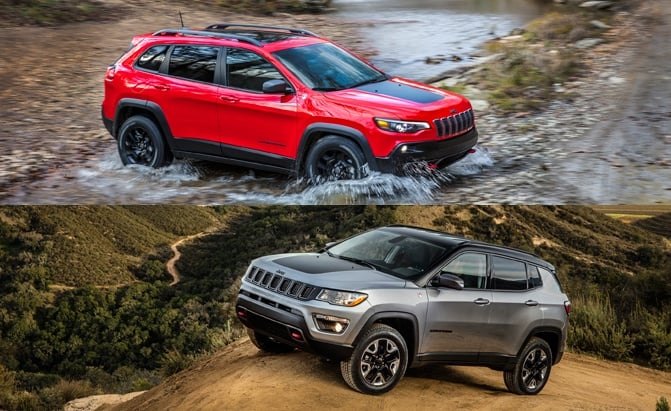























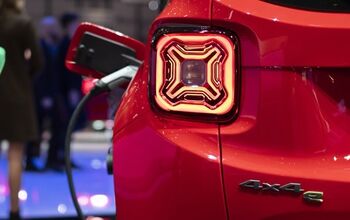

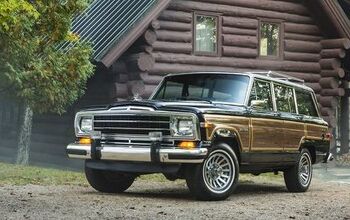

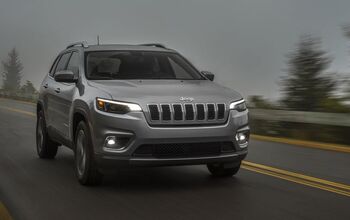





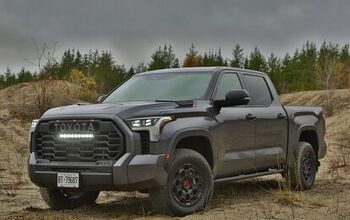
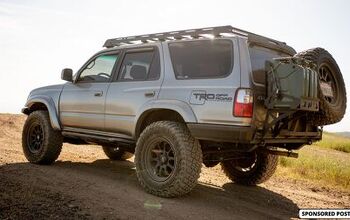

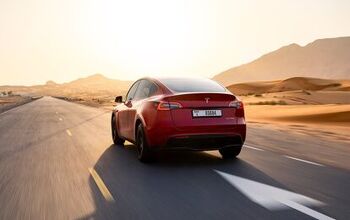

Comments
Join the conversation
Jeep is my dream car
So adorable